Volume 44 Number 3 (2013.9)
Special Feature
Energy Conversion and Storage
Part I. Special Feature
Overview
Review
-
2. Fabrication of Cu2ZnSnS4 Thin Film Solar Cells by Sulfurization
 (2,817kB)
(2,817kB)pages 1-18
Tatsuo Fukano, Hiroshi Nozaki, Shin Tajima, Tadayoshi Ito, Akihiro Nagoya and Ryoji Asahi
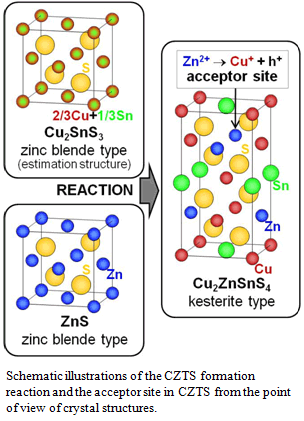
Substitution of the Zn site by Cu [(Cu@Zn)] constituted the dominant acceptor site in Cu2ZnSnS4 (CZTS). Further, solar cell performance strongly depended on the amount of (Cu@Zn). The CZTS thin films were formed by reaction Cu2SnS3 + ZnS·Cu2ZnSnS4. We succeeded in improving the conversion efficiency of the CZTS solar cells.
Research Reports
-
3. Density Functional Theory Calculations on Interfacial Electrochemistry
 (4,101kB)
(4,101kB)pages 19-35
Ryosuke Jinnouchi, Kensaku Kodama, Eishiro Toyoda and Yu Morimoto
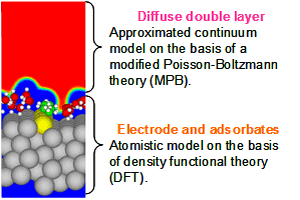
Recent developments and applications of density functional theory combined with a modified Poisson-Boltzmann theory (DFT-MPB) are reviewed. After describing interfacial models and basic equations, results of applications are presented on surface phase diagrams, electrosorption valency values, activation free energies, transfer coefficients, IR-absorption spectroscopy and X-ray absorption spectroscopy.
-
pages 37-43
Shingo Ohta, Tetsuro Kobayashi and Takahiko Asaoka
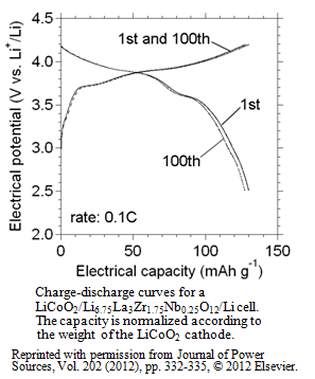
The lithium ion conductivity of garnet-type oxide as a solid electrolyte for all-solid-state lithium ion batteries was successfully improved by optimization of the composition and crystal structure. The electrochemical performance of the battery using garnet-type oxide was evaluated. The charge and discharge capacity is approximately 90% of the theoretical capacity and the interfacial resistance between cathode and garnet-type oxide was comparable to that for a lithium ion battery with a liquid organic electrolyte.
-
5. Solvent Screening and Capacity Enhancement of Li-air Battery with Radical Reactions
 (714kB)
(714kB)pages45-53
Kensuke Takechi, Shougo Higashi and Tohru Shiga
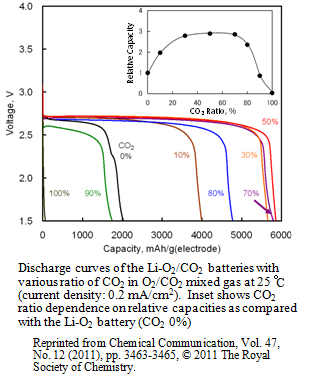
Oxygen radical control has very important roles in Li-air battery and its development. We have proposed facile and effective method to explore the electrolyte in the battery using a radical generator. An extremely high capacity battery using a radical trapping approach, a Li-O2/CO2 battery, has also been developed.
Part II. Highlighted Paper
Review
-
pages 55-61
Norihiro Mizoshita, Takao Tani and Shinji Inagaki
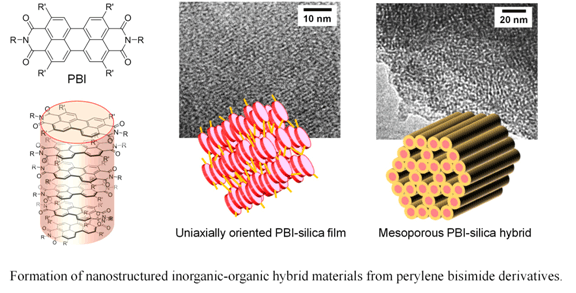
Various types of nanostructured organic–silica hybrid materials have been prepared through columnar self-assembly of perylene bisimide (PBI) derivatives. The formation of columnar liquid-crystalline phases comprising alkoxysilane components enabled long-range orientation of the resulting PBI–silica hybrid films. Surfactant-directed polycondensation of PBI-based alkoxysilanes resulted in a new class of molecularly ordered periodic mesoporous organosilicas.
Research Reports
-
pages 63-72
Tomiko M. Suzuki, Tadashi Nakamura, Shu Saeki, Yoriko Matsuoka, Hiromitsu Tanaka, Shunsuke Sato, Kazuhisa Yano, Tsutomu Kajino and Takeshi Morikawa
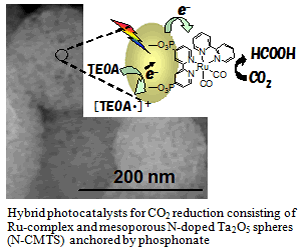
A novel hybrid photocatalyst for CO2 reduction was successfully synthesized by the direct assembly of a metal-complex onto the mesopores of N-doped Ta2O5 spheres (N-CMTS) with phosphonate anchoring groups. The photocatalysts exhibited excellent activity for the photoconversion of CO2 to formic acid under visible-light irradiation due to the anchoring effect of phosphonate, the large surface area, and the controlled morphology of N-CMTS.
-
pages 73-88
Satoru Chatani, Tazuko Morikawa, Seiji Nakatsuka, Sou Matsunaga and Hiroaki Minoura
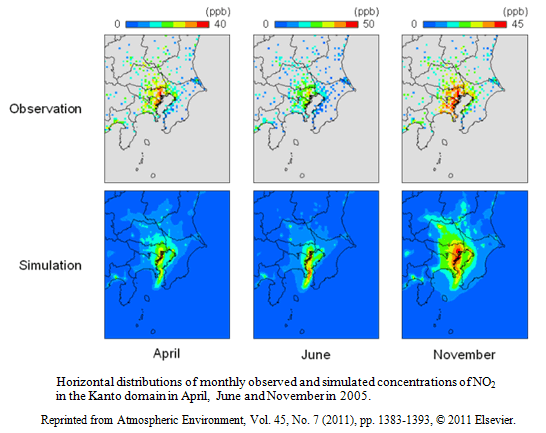
We have developed a framework to carry out three-dimensional regional air quality simulations. The framework enables the simulation of emissions, the dynamic transport of pollutants in heavily polluted urban areas, and the long-range transport of pollutants from continents. These simulations can be used to analyze the impact of future emissions from anthropogenic sources on the air quality over the Tokyo metropolitan area.
